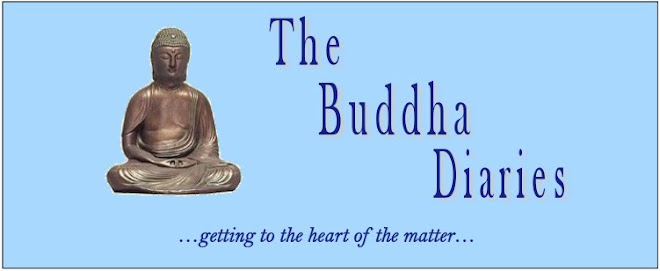
Here's a fine new publication by the documentary photographer Alan Brigish. Breathing in the Buddha is "a photographic exploration of Buddhist life in Indochina," and it documents a journey that takes Brigish through thee major cities in Thailand, Laos and Cambodia, and at greater length through city and countryside in that elusive country, Burma. (The old name has a resonance for me personally that the new one, Myanmar, seems to lack. Perhaps it's the bad old British Empire genes, but I go with Burma.)
Brigish sets out with his camera, "curious about how Buddhist daily life works" in these four Indochinese countries. His lens is then appropriately directed toward two points of interest: the faces and activities of the people--most of them living in states of economic deprivation--and the serene beauty of the Buddhist temples and the stunning artifacts that grace their often opulent interiors.
It is, frankly, at once a compelling and an uncomfortable contrast. The photographs are absolutely gorgeous, reflecting the beauty of their subjects--first and foremost the faces, young and old. The young are fresh-faced, bright-eyed, their emotions close to the surface, whether in child-like joy or, sometimes, pain, suffering and sadness. The old reflect the hardness of lives lived in circumstances far less comfortable that those in which we live here in the West; and, in the case of Burma, in a society repressed by a tyrannical regime. In this context, the aesthetic opulence of the temples reminds me inevitably of the disparity between the architectural grandeur of the medieval church and the real lives of people living in the shadow of the great cathedrals. The monks, saffron-robed and smiling, seem a bit removed from the social circumstance, protected in their spiritual cocoon; and yet their omnipresence clearly provides solace, along with their reminder of values that transcend the suffering of the daily grind.
What Brigish is anxious for us to see, I think, is that human beings can find fulfillment and contentment in their lives, a kind of happiness, without those things that have come to seem essential to the Western mind; property, convenience, comfort--material well-being. The text of his book is the narrative of his journey and his observations along the way. Its subtext, importantly, included at intervals throughout the book in font that mimics the handwritten word, is the Buddha's fundamental teaching of the Four Noble Truths and the Eightfold Path. It's a point-counterpoint strategy, image and text, narrative and teaching, that creates the rhythm that moves the reader through the book.
Brigish is wise to have hewed to the photo-documentary format here, and to have insisted as much on text as on image to convey his story, as well as on a modesty of scale. I'm sure it could have been tempting to go for a large-format, coffee table book replete with the kind of full-page, sumptuous images his photographs could have lent themselves to; but that would have been to introduce another, more damaging contradiction--the condescending Romanticization of hardship, the beautifying of the deprivation and suffering of others. Brigish has managed to avoid this trap with the commendable restraint of his presentation, a desire to share his observations without fanfare or eclat.
In the same context, I was happy that Brigish kept his story personal. It reads like a journal, the intimate record of a journey and of the meanings he himself discovered. His inclusion of the Buddhist teachings feels more like an act of personal realization than a need to preach some pre-established dogma or illustrate a point. Rhyming with his images, they offer themselves for reflection and establish a perspective through which the reader/viewer is invited to share the experience in a meaningful way, to "breathe in" the pages as they turn.
Not having visited any of the countries through which Brigish leads us, I am grateful for the opportunity of this glimpse into a world that was previously unknown to me--which is, after all, the familiar pleasure of all good books.







5 comments:
"-the condescending Romanticization of hardship, the beautifying of the deprivation and suffering of others.----astute observation.
yes, mandt, I was struck by the same observation. what a lovely review - it entices me to buy the book!
Thanks, Peter.
As author/photographer, I was really gratified that Peter picked up on this. I am an inveterate 3rd World traveler and find myself acutely aware of how easy it is to fall into this trap. I always try to engage, within the limitations of language and custom, with my subjects and try to put myself in their shoes. This helps me to understand both their level of acceptance of their own lot and my own feeling of being blessed to be merely an observer.
I did not intend to be Anonymous. The last post was by Alan Brigish
I will look for this book. It reminds me of the social documentary photography of Phil Borges, who also takes breathtaking pictures of people in the same countries as well as others but without much complementary text, if I recall correctly.
It sounds as if Alan Brigish has not only a spectacular visual gift, but also the delicacy to allow his photos to tell their own stories. I can't wait to find a copy, so thank you for sharing this here.
Post a Comment